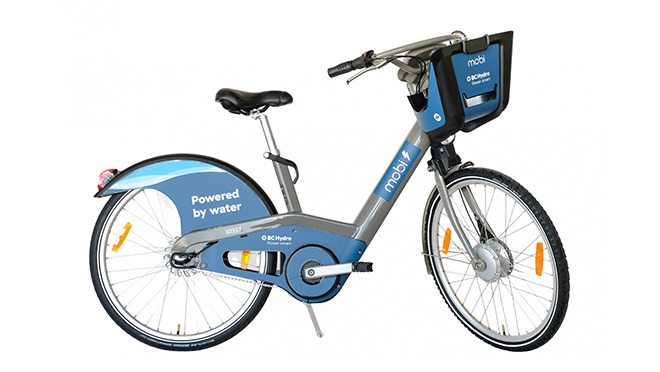23 #TeamPowerSmart resolutions for 2023

Share your commitment, and enter this month's Team Power Smart contest
Making smart energy choices and doing the right thing can add a spring to your step. It's a feelgood charge that makes your world (and the world beyond) a better place.
Now that it's 2023, we've put together two ways to help you make smart choices and be successful at your resolutions.
1. We have a list of 23 resolutions below packed with ideas for saving energy, lowering your household CO2 footprint, and improving your health and well-being. Many resolutions on the list can also help you in your quest to hit your target if you're in a Team Power Smart Challenge.
2. This month’s Team Power Smart contest is all about energy saving resolutions. All you have to do is make an energy saving resolution to enter the contest.
Pick a resolution, use #TeamPowerSmart as you share it on social media
As a Team Power Smart member, we want you to pick one (or more), then share it on Facebook or Twitter. It could be as simple as messaging: 'I'm getting smarter with my laundry in 2023, saving energy and my clothes.' Just make sure to include the hashtag #TeamPowerSmart, to identify you as a Team Power Smart member and to make it easier for others to find. If you're new to social media, here's help on how to use hashtags.
Enter this month's member contest
Log in to your Member Tool Box to enter this month's Team Power Smart contest for a chance to win a $150 London Drugs gift card. Make an energy saving resolution to enter the contest via your Tool Box.
And now, here we go with the resolutions. Use the links below to get to the type of actions you're most interested in.

Saving energy
1. Get smarter with your laundry
Using cold water and hang-drying at least some of your clothes aren't just energy- and money-saving moves. They're also easier on your clothes, which will look better longer, holding their shape and colour, when washed and dried carefully.
Did you know? An estimated 100 billion garments are produced each year, and 92 million tonnes end up in landfills. That's a garbage truck full dumped in landfill sites every second.
2. Turn up the comfort, turn down the heat
Staying comfortable at home in winter months doesn't have to mean huge spikes in your energy bills. Only heat the rooms you're using, when you need them. And wear slippers and a sweater or hoodie to allow you to turn the heat down a degree or two.
Did you know? Heating costs can increase by about 5% for every degree above 20°C (68°F)? Most people often set their thermostat higher than it needs to be.
3. Cook with smaller, efficient appliances
Small appliances such as slow cookers, Instant Pots, toaster ovens, air fryers, and blenders are convenient, effective, and help reduce your electricity bills. There are also thousands of delicious recipes, many of them packed with nutrition, available online.
Did you know? Cooking with a small appliance uses up to 75% less energy than cooking the same meal with your oven or stovetop.
4. Start a 10% Reduction Challenge or Maintenance Challenge
As you make changes to your electricity use at home, you can save money on your energy bills. While you're at it, log in to your Member Tool Box and start a 10% Reduction Challenge for a shot at earning a $50 reward for cutting electricity use by at least 10% over 12 months. C'mon, you can do it, even if you've made the switch to an electric vehicle or heat pump.
Did you know? If you've already done a successful Challenge, you can try it again or opt for a Maintenance Challenge in which you can earn $25 for maintaining the reductions you made in your previous Challenge.
5. Turn things off – and turn down the heat – when you go away
The next time you plan a vacation getaway, take a few minutes to turn off and unplug as many non-essential devices as possible. And especially on a winter vacation, adjust your heat to 16°C or cooler.
Did you know? Smart home lighting and locks can help keep your home secure while you're away.
6. Use drapes and blinds strategically
You'll get a comfort boost in your home – and lower energy costs – by opening and closing blinds and drapes strategically. In winter, open your window coverings during the day to let the sunlight warm your home naturally. Then close them at night to help keep the cold air out.
Did you know? If you have older, inefficient windows, consider adding window film. See our do-it-yourself video on how to apply insulator film that acts like a second pane of glass.
7. Limit your shower time to five minutes or less
There's no easier way to save on hot water-related energy costs than to choose showers over baths, as a bath can use three to six times as much hot water as a five-minute shower. But shower length is the key.
Did you know? If two people in your home cut their shower time by a minute each, you could save $30 on energy costs over a year. Cut showers by two minutes, and you could save $60.
8. Make sweaters and slippers a habit
Wearing a tee shirt indoors during the cold months will likely force you to turn up the heat and experience higher energy bills. Warm feet and a sweater or hoodie – or a blanket on the couch – allow you to reduce your thermostats and your costs.
Did you know? We recommend lowering your thermostats to 16°C as you turn in for the night, setting it at 18°C when you're doing housework or cooking, and 21°C for when you're watching TV or sitting in one spot for awhile. If you have a heat pump, you'll be better off with a 'set-it-and-forget it' strategy, and we have tips to help you save.
9. Use your dishwasher more efficiently
Only wash full loads of dishes, and avoid hand-washing dishes (which uses more hot water than a dishwasher) to save money in the kitchen.
Did you know? Your dishwasher's heat-dry setting adds a lot of unneeded warmth to a house in summer and uses a lot of energy year-round. Try turning off that setting and air-drying your dishes.
10. Look for the ENERGY STAR® label
When shopping for appliances, heating and cooling systems, lighting, and electronics, always look for the ENERGY STAR label. It identifies products that have met or exceeded technical specifications for high efficiency, and our Power Smart Shop helps you find and compare the most efficient options available at retailers in B.C.
Did you know? You can use our appliance cost calculator to get an idea of what some ENERGY STAR devices can save you. For example, replacing three halogen track lights with three ENERGY STAR LEDs can save you over $33 a year in energy costs for track lighting used an average of six hours per day.
11. Upgrade to a smart thermostat
Want to make sure your home is warm and cozy when you get home, even on the coldest days of the year? A smart thermostat will make your life more convenient and it can help save you money on your electric bill.
Did you know? It's important to get the right smart thermostat for your heating system. We offer tips on how to use wifi thermostats, including lists of which thermostats are best for baseboard heating, forced air, and heat pump systems. And until January 31, 2023, we have a rebate of up to $30 on select smart thermostats.
12. Fix that leaky faucet
A leaky faucet can waste up to 10,407 litres of water each year. Fixing a leaky hot water faucet can save you up to $45 per year in water heating costs.
Did you know? Worn-out washers are the main cause of leaks in faucets, and a new one generally costs about 25 cents.
13. Seal leaks around windows and doors
Energy bills go up when gaps and cracks around windows and doors let cold air in during the winter months and warm air in during the summer months.
Did you know? We have helpful how-to draftproofing videos that feature our spokesperson Dave showing how to check for drafts, apply weatherstripping, and even using foam gaskets to stop air leaks around plugs and switches.
14. Keep a close eye on your electricity use with MyHydro
Log in to bchydro.com to access your MyHydro account, which gives you the power to view bills online, manage payments, start/stop/move your service, track and compare your electricity use, and to access tips and tools. If you're a new customer, you'll first need to create a MyHydro Profile to manage your account online.
Did you know? You can track your home's electricity use with MyHydro right down to the hour, and you can compare that energy use to outside temperatures, last year's energy use, and to similar homes in your neighbourhood.
15. Find out if you qualify for a free energy savings kit
We have offers based on income. Free energy saving kits include LED light bulbs, weather stripping, high-efficiency showerheads, water-saving tap aerators, an LED night light, fridge and freezer thermometer.
Did you know? If you live in an income-qualified household you could be eligible for energy coaching and free upgrades to help improve the comfort and efficiency of your home with our Energy Conservation Assistance Program.
16. Before you renovate, check out our rebates
Finishing the basement? When planning renovations, look for ways to improve the building envelope and efficiency of your home. Take advantage of rebates for insulation upgrades, windows and doors, space heating and cooling, and water heating.
Did you know? In partnership with CleanBC, we offer combined renovation rebates of up to $10,000.
17. Learn how to use a portable space heater wisely
Working from home or home alone? When used properly, portable space heaters can be an efficient way to heat small spaces and to avoid having to turn on your baseboard heaters. But they can be energy-hungry, so its best to use them sparingly and strategically.
Did you know? Using our cost calculator, you'll see that a 1,400-watt space heater used an average of four hours a day will cost you about $19 a month to operate.
18. Set reminders for subscriptions, and stream efficiently
"Auto pay" on streaming TV, music, and phone subscriptions could be costing you a whole lot each year. A 2022 study by C+R Research found that on average, consumers surveyed underestimated their monthly spend on subscriptions by $133. Make it a habit to set reminders for free trial deadlines and/or subscription anniversary dates, as that great deal you got for a month or a year could cost you plenty upon auto-renewal.
Did you know? Avoid streaming TV and movies through a game console. It consumes 10 to 25 times more electricity than a TV or streaming device such as an Apple TV, Roku, or the Amazon Fire TV Stick.

Cutting CO2 emissions
19. Travel smarter, near and far
The way we commute, and how we spend our vacation time, doesn't just factor into our CO2 footprints. It can also make us healthier. Bike and walk whenever possible, opt for transit over car use, and consider trimming the number of plane trips you take each year.
Did you know? Switching to a mid-size electric vehicle – such as the popular Hyundai Ioniq 5 – could save $1,300 per year in fuel costs for someone driving 15,000 km a year. And the cut in C02 emissions is the equivalent of planting 164 trees each year.
20. Replace gas power with electric
Upgrades in technology have made everything electric, from leaf blowers, to lawnmowers, power washers, induction stovetops and electric vehicles, a whole lot more practical. As you search to replace technologies inside and outside your home, look at options that in hydroelectricity-rich B.C., are powered by water.
Did you know? In addition to rebates for the purchase of electric cars and chargers in B.C., the limited-time SCRAP-IT program is back with an additional $500 rebate for those who scrap their qualifying gas-powered vehicle for a new or used EV or $400 for a hybrid plug-in vehicle. The SCRAP-IT program also offers the option of trading that scrapped car for monthly TransLink passes valued at $820.
21. Consider installing a heat pump
Heat pumps are increasing in popularity across B.C., including in colder areas where some cold-climate heat pumps can operate in temperatures as low as -30°C. They're efficiency upgrades that can save you money over other home heating systems such as a natural gas furnace or electric baseboards, and they provide both efficient heating and cooling to help keep your home comfortable year-round.
Did you know? Combined heat pump rebates of up to $11,000 are available for those switching from fossil-fuel heating systems, and there's a northern B.C. top-up that adds another $3,000 in savings. And for those switching from electric baseboards to a heat pump, rebates of up to $7,000 are available.

Health and safety
22. Crank up the veggies and fruit in your diet
In case you missed it, the Canada Food Guide now recommends a shift towards more veggies and fruits, and it has visualized it with a plate that's half covered with veggies and fruits. One quarter of the plate is reserved for whole-grain foods, and only a quarter is for protein-rich products.
Did you know? A smoothie can be a great substitute for breakfast, or even for lunch, if you're careful to avoid going overboard on the sugar. The trick is to go heavy on the veggies – it may surprise you how much spinach you can add without compromising taste – and light on sugary fruits, juices and sweetening agents such as honey or maple syrup.
23. Don't wait to build or buy an emergency kit
If we sound like a broken record on this one, it's because emergencies happen in B.C., from power outages, to floods, wildfires, or an earthquake. Having a 72-hour emergency kit in your home, and an emergency plan for your family, is just common sense.
Did you know? A 2020 BC Hydro report [PDF, 689 KB] found that 30% of British Columbians polled had taken no steps to prepare for an outage, and half didn't have an emergency kit on hand.